by Ian Francis & Nicky Penford
We’re fortunate in that most Greenland White-front wintering sites have dedicated people living locally who count the birds during the winter as part of our UK and Ireland count network. They do a great job in checking the geese and recording vital parameters. But supplementary information is always useful, as the birds are not always easy to find. In particular, this includes recording the number of young birds and scanning for any markers such as collars or leg rings. We visited the Loch Lomond wintering site in mid-December 2023, to supplement the observations of local watchers. Here is an account of a Greenland White-front search, showing the highs and lows of a typical visit.
First, find your birds! Although the geese are usually very site loyal (and after many surveys in previous years, we know where they are most likely to be), they are not always evident, depending on feeding conditions and disturbance. So, a drive around and search from high watchpoints, such as Dunchryne Hill, is always a good start. This did not yield results until most of the area had been searched – then suddenly, a scan revealed a fairly large flock feeding in a rush-covered field. There are many suitable fields and hidden dips that can hide birds, so finding them is always a great relief.

Small groups of geese can easily hide, but large flocks are usually possible to locate. Having found them, the next consideration is to get into the best place for observations, taking into account direction of sunlight, wind, possible driving rain and also, if car-based, where to park. Optimal conditions are rarely found!
A telescope is usually needed to count effectively, but one is essential for ageing and checking for collars. There’s always a temptation to try and get closer if there is cover, but the geese are incredibly vigilant, so unless the cover is really dense, it’s not worth trying as one of them will spot you and you risk scaring the flock. But if you are too far away, you don’t get the best view. This is the challenge of field craft, trying to balance the different considerations.
If you get into a good position, then counting them as quickly and efficiently as possible is the first task. At any time, a tractor could appear and flush them. A quick count, followed by a more detailed count, and then a further cross check, is ideal. If that goes well, then a period of more detailed observations is needed. The counts might reveal an obvious collar, with that then becoming a clear focus. But if a flock has not had a decent ageing that winter, then a count of juveniles and family sizes is the main priority. That is not as easy as it might seem!
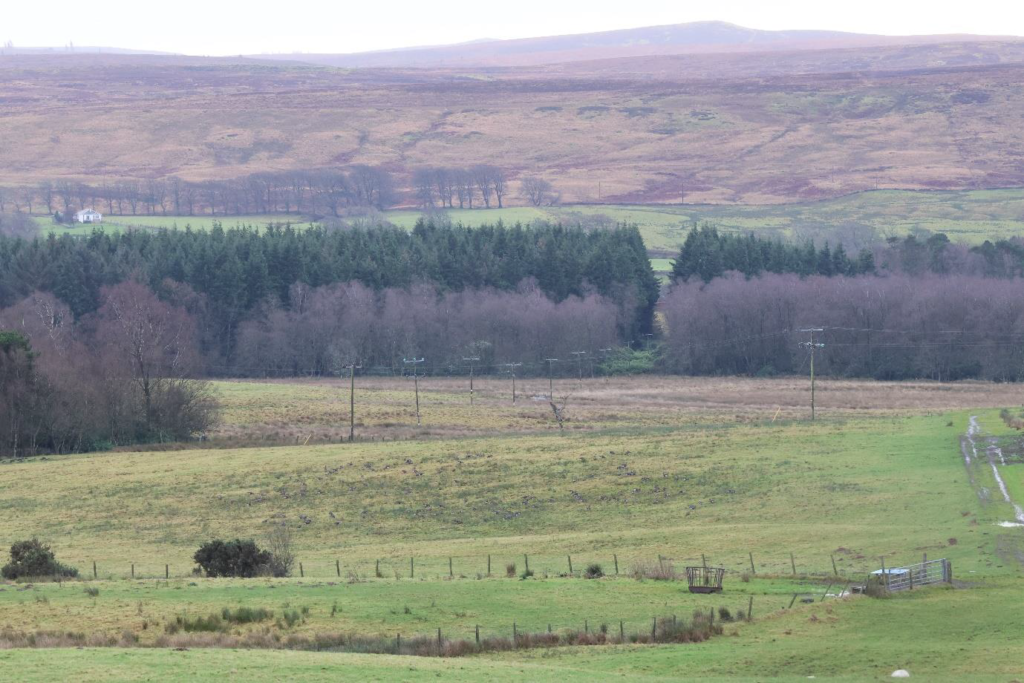
Working systematically through the flock using the telescope and a tally-counter, the aim is to get the largest sample of birds possible, recording the number of young birds and if possible, brood sizes (juveniles associated with adults). It is almost never possible to do this for the whole of a large flock, so several attempts are needed, taking the best result (largest sample). When scanning, there are always birds which are invisible behind tussocks, sitting down, heading in the wrong direction, obscured by other geese, sleeping, and so on, which always makes a proportion of the flock impossible to age in any one scan.
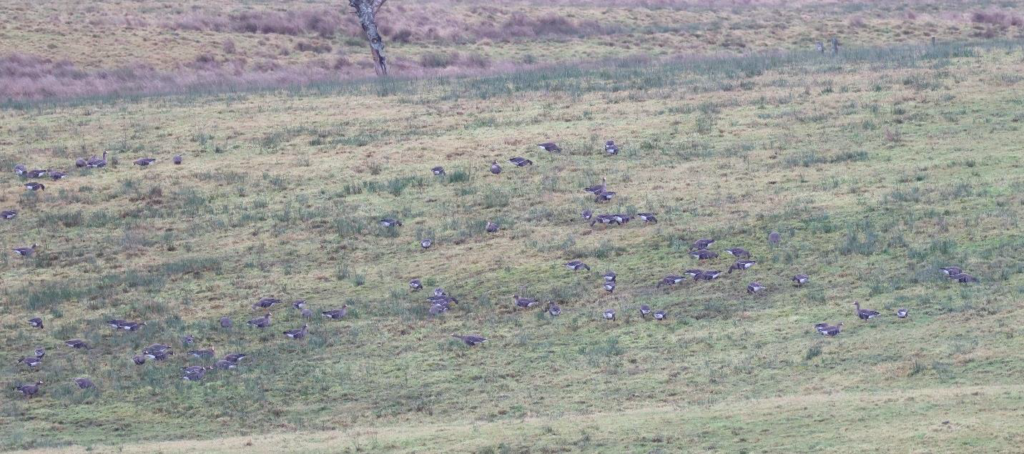
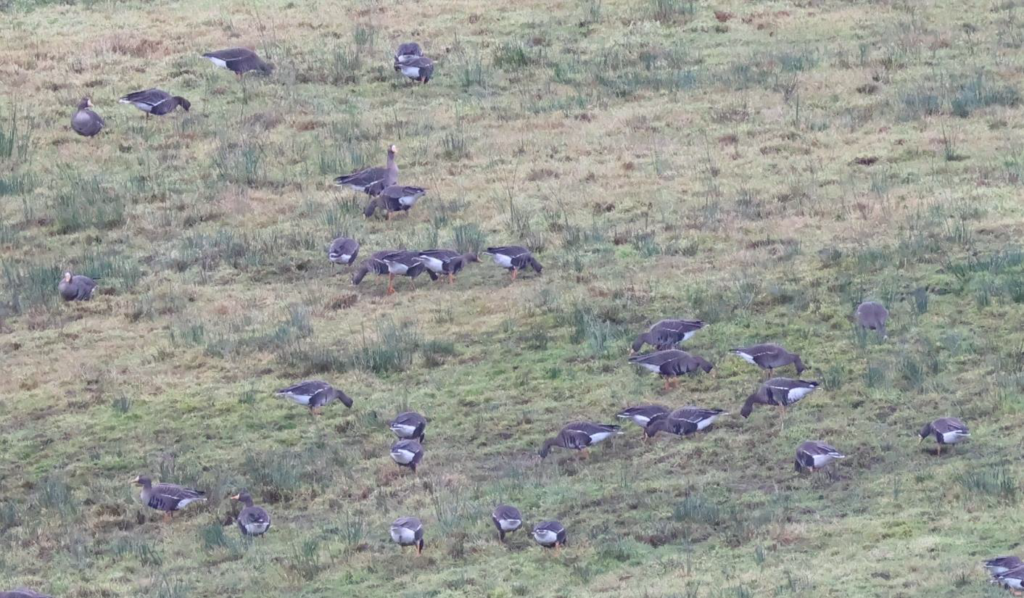
So, we’ve located our birds, found a safe place to watch from (albeit a bit distant), and worked our way through them to count juveniles. The only problem on this visit was that there weren’t any. We found 161 birds, but there seemed to be not one juvenile amongst them. We may have missed the odd one, for the reasons above, but the conclusion was that almost certainly this group did not contain any young hatched this year. This is the perennial problem with Greenland White-fronts – they are just not producing enough young in Greenland, leading to the recent population decline.
Yet, the local Loch Lomond counters, based around the RSPB reserve, had already found around 10 juveniles in November, and a previously higher total of c.180 birds. It seems likely that a small group, maybe around 20 birds, perhaps containing the families with youngsters, was elsewhere – but we could not find them today. It’s unlikely that these families with young had moved entirely away from Loch Lomond to other sites, though that can’t be ruled out.
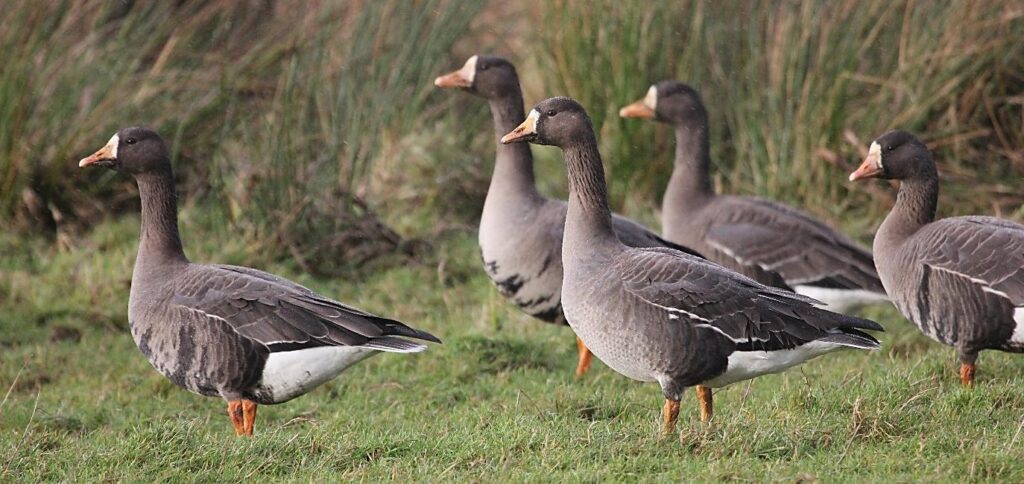
Thorough scanning also allowed a check through them for collars – none was seen. Although there are many Greenland White-fronts with neck collars, as a result of recent captures on Islay, Wexford, Anglesey and Colonsay, most have not visited Loch Lomond, and there have only been a few sightings here over the years. A really good check will also give the chance to check for white leg
rings. Some birds lose their neck collars, leaving only the metal ring and accompanying white plastic leg ring. These are very hard to spot and almost impossible in long vegetation, such as in the much-beloved soft-rush dominated fields the birds frequent. Our observations here did not record any.
Finally, after a long period of watching, we were confident (but disappointed) that there were almost no young in these 161 birds, and that no collars and probably no leg rings were present.
Fortunately, the rain stayed off during our time there, so visibility was good, and the geese were still feeding away when we left. Another chance tomorrow, we thought.
However, the next day brought Storm Pia – gale force winds and heavy squally showers. We ventured out during the morning around all the possible goose haunts. None was present where they were feeding yesterday, and after a while we found only a couple of small groups each of 20 or so birds, looking as if they were mostly adults once more. But most geese were hunkered down with head on back, angled against the wind and sheltering close to the ground. Driving rain made us realise that getting good results today was highly unlikely, so we departed.
On our visit, it was great to find the birds yesterday and have good conditions for watching, but very sad to see so little evidence of production of young in Greenland in summer 2023. Let’s hope the true figure for the birds wintering here proves to be somewhat better than our observations, and that Loch Lomond is not representative of all their Scottish haunts when the full results are available.
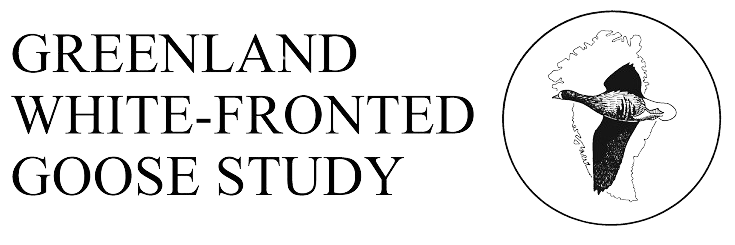
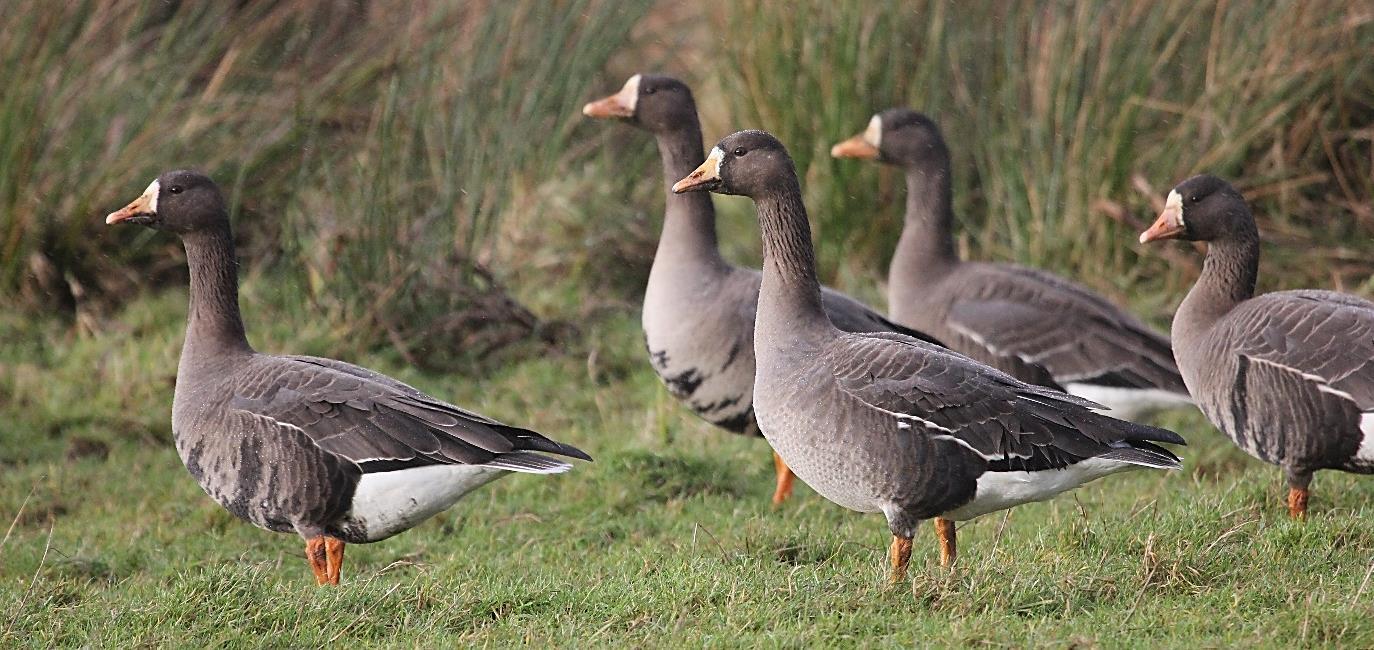
Leave a Reply